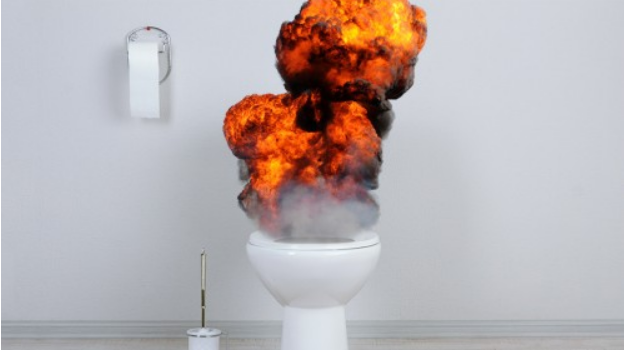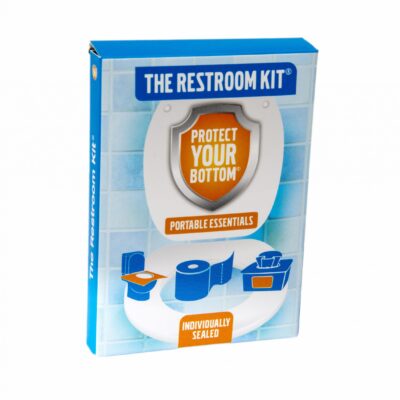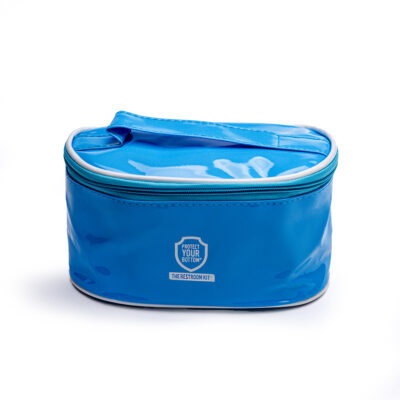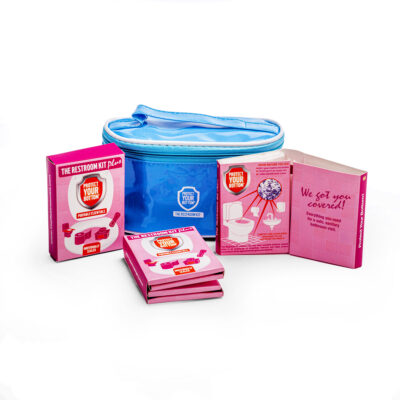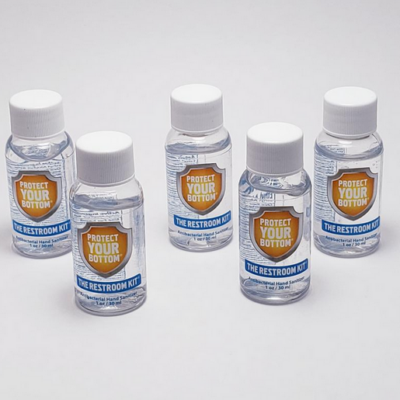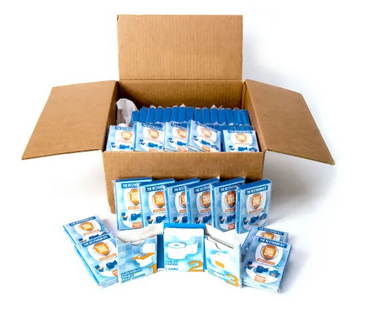All your life, you have been focusing on the wrong aspect, experts say.
A recent study done by the National Institute for Occupational Safety and Health in partnership with the University of Oklahoma confirmed that turbulence created from flushing the toilet can create microscopic aerosol droplets rising to 3-15 feet. The droplets forced up into the air can linger long enough to be inhaled by the next user or even settle on surfaces around the bathroom.
Experts call this “toilet plume.”
It’s not only gross, but the toilet plume is a potential vector for infectious disease. As it is, toilet plumes have already been implicated by epidemiological studies in outbreaks of infectious diseases in cruise ships, apartment complexes, restaurants, and even airplanes.
Flushing the toilet with the lid closed reduces contamination of the bathroom environment by toilet plume. (PBS)
For many centuries, the potential for airborne disease transmission through sewage has been a subject of scrutiny. However, the toilet plume became a subject of interest in the ’50s. By experimenting using seeded toilets, scientists found that handles, floors, and seats around toilets get contaminated with bacteria and viruses.
Researchers say that the prospect of Coronavirus transmission in toilets is real because diarrhea and vomiting are part of the symptoms that many patients experience. Estimates show that people infected with the Coronavirus shed 57-11.3 billion viral genomes daily.
The Coronavirus may be most comfortable in the upper respiratory tract, but other studies have confirmed they can also survive in cell receptors of the small intestines.
Gastroenterology, a medical journal, published a study highlighting the significant amounts of the Coronavirus found in the stool of infected people. Even after the virus clears up from the gastrointestinal tract, the viral RNA was still found to be present in a patient’s feces.
In another study published by Lancet, the Coronavirus was found to last in feces for close to 4 weeks after the virus clears up. Now, even sewage has become a subject of interest to scientists who want to dig deeper into the details.
The Physics of Fluids journal published the findings of a study done by Ji-Xiang Wang, a fluids scientist from Yangzhou University in Yangzhou, China, under orders from the Chinese government. In his report, Wang reported that single-inlet and annular-inlet toilets result in the transmission of the virus in large quantities.
Depending on the number of outlets in a toilet, flushing a toilet can push out 40-60% of aerosols up above the seat height. The vortex flushing the toilet has a centrifugal force powerful enough to displace over 6,000 droplets out of the toilet.
When using public toilets, flush and run. (Blush)
After air samples from two hospitals were studied in Wuhan, China, it becomes crystal clear that we cannot overlook the toilet plume. It was reported that in the isolation wards and ventilation rooms, coronavirus aerosols were very low. On the contrary, in toilets used by patients, the coronavirus aerosols were very high.
“It’s alarming,” cries Dr. Ji-Xiang Wang.
Lab experiments show that the material from toilet plume may be less infectious in comparison to the virus that is coughed out. This is not to say that we should overlook the potential hazards. If anything, we should be more proactive now that we know.
The concept of aerosol generation from toilets is not completely new. However, the public has always taken it for granted. These studies are a wake-up call. We all need to take better action moving forward.
Public washrooms may be common points for virus transmission. During this pandemic, experts argue that we must rethink when it comes to these commonly shared public places.
Keeping washrooms 100% sanitized all the time is virtually impossible. Even in a family where one person is infected with the coronavirus, sharing the bathroom with other family members may be unavoidable.
The world is slowly navigating through the concept of reopening workplaces, recreational centers, and businesses. More people will be forced to make use of public washrooms. Employees may be spaced out, and dinners may be moved to outdoor spaces, but how will people practice social distancing in small washrooms?
We already know, through experience with other coronaviruses, how fast fecal-oral routes spread disease. In early 2003, the SARS coronavirus infected more than 300 people living in an apartment complex in Hong Kong. The outbreak was due to the aerosolization of infectious fecal matter through faulty drainage and plumbing systems.
All these theories still warrant further studies. Scientists agree that they are yet to test the effect of real-life toilet aerosols when it comes to the new coronavirus.
Proper washroom sanitation practices can help reduce spread of coronavirus. (Healthline)
However, we must admit that viruses can be present in feces. It may happen rarely or in severe cases, but this means that it is theoretically possible that toilet plumes could contain live viruses. Plumes can result in surface contamination and droplet aerosolization. As a matter of fact, the concept of toilet plumes as a disease vector is not only limited to Covid-19.
Proper sanitation is a powerful weapon again illness-causing germs in general. These studies recommend that most importantly, lid-closing is one of the best ways to minimize toilet plume.
The evidence might be unclear, but the advice remains.
Don’t spend more time than is necessary in public toilets, especially those without lids. Wash your hands thoroughly after flushing the toilet and apply hand sanitizer once you are outside the washroom. If it’s possible, chose bathrooms that have better ventilation.
Avoid touching your face while you are using a public restroom. Always keep your mask on, to avoid exposure to viruses.
With this new information, experts hope that there will be an improvement in bathroom designs.
Toilets that flush automatically, contactless dispensers, and paper towels are just but the few suggestions that they have in mind. Others suggest that indoor ultraviolet lights and automated sprays for disinfection will help reduce toilet plumes and improve the general sanitization of public washrooms.
Order The Restroom Kit for your family, office, roommates and teammates by visiting our website today.

